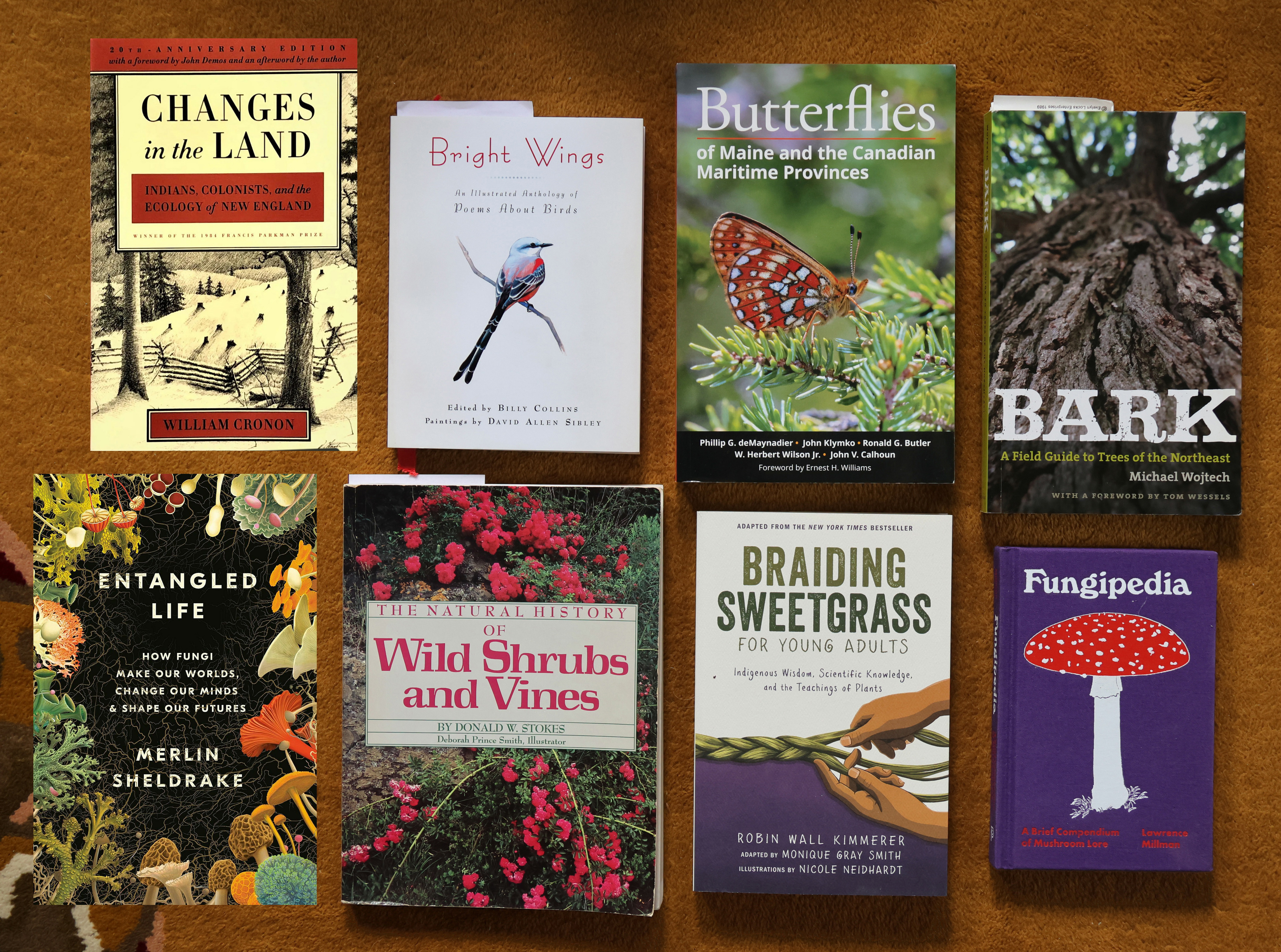
With the gift-giving season nearly upon us, the question once again is: how to give nature to the special people in your life? Relatively new on the scene are phone apps for making IDs in nature for bird songs, wild plants, and more. But to get beyond IDs to deeper, broader knowledge of nature, it’s hard to beat books, especially books that are relevant to our own local natural environment. Here are some suggestions for books to give – or ask for.
Three top picks:
“Braiding Sweetgrass: Indigenous Wisdom, Scientific Knowledge and the Teachings of Plants” by Robin Wall Kimmerer. New York Times bestseller. As a member of the Citizen Potawatomi Nation and a PhD botanist, the author is uniquely qualified to explain how central the land and natural world are to an Indigenous world view. Stories share both scientific and indigenous knowledge about local inhabitants of the natural world, such as cattails, common plantain (also called white man’s foot), spruce trees, rock tripe lichen, spotted salamanders, and more.
A shorter, well-illustrated young adult edition is also available: “Braiding Sweetgrass for Young Adults: Indigenous Wisdom, Scientific Knowledge and the Teachings of Plants” by Robin Wall Kimmerer, Monique Gray Smith, & Nicole Neidhardt (illustrator).
“Changes in the Land: Indians, Colonists, and the Ecology of New England” by William Cronon. This readable book helped to start the field of environmental history and focuses on our part of New England. It describes key changes in the landscape that resulted from the arrival of European settlers with a very different way of life from that of the people already living here.
For the birder in your life, or anyone who loves birds and/or poetry:
“Bright Wings: An Illustrated Anthology of Poems About Birds” by Billy Collins (editor) and David Allen Sibley (bird illustrations). Brighten a winter’s day, or any day, with this collection of 100-plus classic and contemporary poems chosen by a former U.S. poet laureate and accompanied by about 60 color bird portraits by today’s top bird illustrator. Of course, many poems are about more than birds.
For a mushroom lover or any fan of nature:
“Entangled Life: How Fungi Make Our Worlds, Change Our Minds, & Shape Our Futures” by Merlin Sheldrake. An eye-opening New York Times bestseller about fungi and how they’re everywhere – inside us and all around us – connecting everything and doing things we can learn from and perhaps use to better our future. A provocative, contemporary view of a part of nature that most people ignore. Well written and readable.
“Fungipedia: A Brief Compendium of Mushroom Lore” by Lawrence Millman. For the amusement of mushroom lovers and curious readers, this small (4-1/2” by 6-1/2” format) book has a wide variety of mushroom- and fungi-related topics, arranged alphabetically (encyclopedia style), with a few entertaining and informative paragraphs per entry.
For a tree-hugger or anyone interested in getting to know the trees in our region:
“Bark: A Field Guide to Trees of the Northeast” by Michael Wojtech. This book describes how to look at bark to identify trees, especially helpful when leaves are down. Along with color photos of each tree’s young, mature, and old bark, this guide also includes useful year-round ID information about 67 New England trees: simple leaf drawings (outline and vein pattern), branching patterns, brief habitat descriptions, range maps, and notes about uses.
For a nature enthusiast, anyone who likes wild plants, or even a gardener:
“The Natural History of Wild Shrubs and Vines” by Donald W. Stokes & Deborah Prince Smith (illustrator). Shrubs and vines fill the gap between treetops and wildflowers in our woods. Nicely illustrated with fine, precise line drawings, this “oldie but goodie” (1980s) describes the characteristics and lives of 50 shrubs and vines of eastern/central North America in a readable, conversational style.
For a butterfly lover or someone who lives or vacations in Maine:
“Butterflies of Maine and the Canadian Maritime Provinces” by Phillip G. deMaynadier, John Klymko, Ronald G. Butler, W. Herbert Wilson Jr., & John V. Calhoun. Most of these 121 butterfly species are also found in Massachusetts, making this informative new (2023) book relevant here as well as in Maine. Species get two pages with a color photo, distribution map (Acadia region), flight time diagrams, distinguishing characteristics, similar species, habitat, biology, adult behavior, threats, and more. The butterfly conservation chapter is also very relevant beyond Maine.
Enjoy the natural world in the holiday season!
What might you find outside in nature in late fall? Use the WCLT Nature Notes online monthly index for November & December to find out.
Do you know that Westborough has 60 miles of trails, and the Westborough Community Land Trust (WCLT) has trail maps? WCLT preserves, protects, and promotes open space in Westborough (westboroughlandtrust.org and facebook.com/westboroughlandtrust)
















